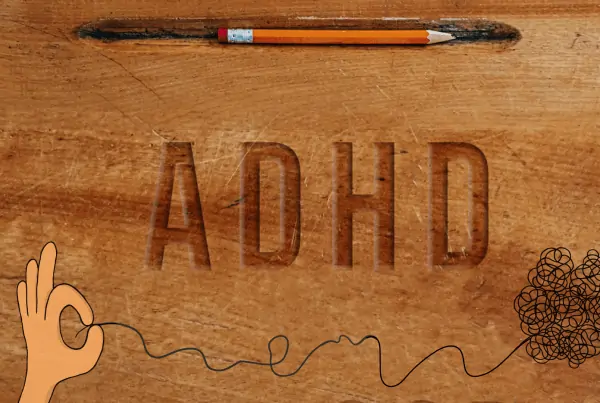According to statistics, up to eight percent of teens were abusing amphetamines by the end of high school in 2012. The number of reported instances by high school students had decreased by half as of 2019, but teen amphetamine abuse for those in middle school had nearly doubled. This means that young teens are more at risk than ever of abusing prescription medication.
What Are Amphetamines?
Amphetamines are a class of substance which produce stimulation to the central nervous system. They are medically prescribed to treat neurological conditions such as Parkinson’s Disease and attention deficit hyperactivity disorder (ADHD or ADD).
In the absence of these disabilities, amphetamines produce a burst intense energy and focus for the user. A person under the influence of amphetamines may experience the ability to complete tasks more easily, or may be able to obsess for hours on a task without interruption.
The increase in mental focus comes at a cost. When amphetamines are not used in the precise way prescribed by a doctor, both physical and mental health problems can occur. Amphetamines are highly addictive, and can cause side effects such as restlessness, heart palpitations, seizures, agitation, and even psychosis.
Risk Factors for Teen Amphetamine Abuse
Teens with family members who are prescribed amphetamines for medical conditions – or who are already prescribed them, personally – are a primary source of supply for illegal distribution of prescription medication. Several campaigns have been launched over the years, warning parents of the trend of stealing pills from medicine cabinets. While easy access to medications are an obvious red flag, there are other factors which can be observed as contributing to a risk that a teen will be tempted to abuse prescription amphetamines.
Having Friends Who Use
It is a fact of developmental psychology that teens are influenced by their peers. The adolescent stage of life is all about teenagers learning how to separate from their parents in a way that supports eventual adulthood. As part of this process of development of adult identity, selected friends can begin to replace the role of the nuclear family when it comes to establishment of norms and behaviors. If the norms of a teen’s peer group includes amphetamine abuse, the temptation to join in will be high.
Purchasing of Other Drugs
There has been much debate about whether using other, less addictive, drugs provides increased risk of using the more dangerous drugs. While the verdict on so-called “gateway” drugs is still in dispute, what is more concrete is the fact that drug dealers often sell more than just one substance. The potential for exposure to drugs like amphetamines while scoring that next bag of weed or hit of ecstasy is likely, and increased exposure can result in a deterioration of willpower to resist giving amphetamines a try.
Lack of Parental Involvement
As with many other behavioral problems, a teen who is not monitored by parental figures is more likely to get into trouble. Studies examining the perceptions of parents when it comes to their teen’s behavior show that many parents are largely unaware of the activities that their adolescents are engaging in. Failing to educate teens on the responsible use of medications and not keeping track of the supply can be viewed as passive permission from a parent for the teen to pursue the behavior.
Mood Disorders
Years of data has consistently linked the tendency for substance abuse to the presence of other, diagnosable, mental disorders. Up to 75% of adolescents who abuse substances are simultaneously suffering from symptoms of depression, anxiety, psychosis, and trauma. For many, the drugs are viewed as a way to escape from the negative thoughts and emotions associated with such disorders. The dulling of emotions and distraction from introspection that amphetamines produce make this type of drug particularly attractive.
Lack of Future Goals
We have all heard something like, “the idle mind is the devil’s playground.” This antiquated phrase speaks to the tendency of human beings to get into trouble when we are not occupying our minds with worthwhile ideas, goals, and plans. A teen who is lacking in a clear direction for his or her future is at risk of not considering the consequences of using drugs for a short-lived escape.
Early Warning Signs of Teen Amphetamine Abuse
While the above areas can be viewed as precautions for the development of a substance abuse problem, the following are signs that teen substance abuse has already started. Parents are advised to follow up on any hunches regarding the possibility of their teen abusing substances, and not to wait until the problem gets out of control. These factors are just a handful of symptoms to be on alert for when identifying teen amphetamine abuse.
Odd Sleeping Patterns
Amphetamines are a stimulant, meaning that they trick the mind into thinking it does not need as much sleep. Depending on the dosages, a teen who is using amphetamines may be observed as staying up all night, and then being inexplicably during the daytime. He or she may also be observed as going multiple days in a row without conforming to a standard bedtime.
Weight Loss
Along with the need for sleep being decreased, stimulants such as amphetamines also trick the body into feeling a lack of hunger. This effect of amphetamines is so well known, that it was previously promoted as a diet drug. A teen misusing this medication may be observed as regularly skipping out on family meals, and may begin to show obvious signs of dropping weight.
Lying
A red flag which is common to all substance abuse behaviors in teens is that of lying. Lying is a reaction to the desire to avoid getting into trouble or to ensure that a disapproved behavior can continue without interference. A teen who is abusing substances will feel an urge to lie about being on the drugs, lie about what he or she is doing with her time, and lie about the people he or she is hanging out with.








